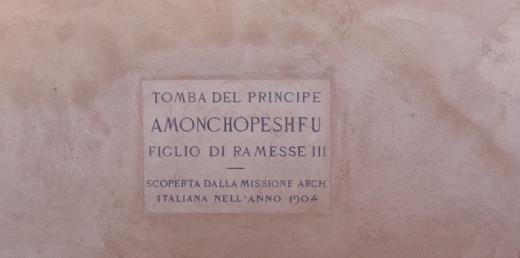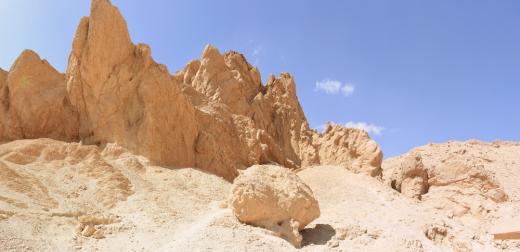QV 69
Anonymous*
About
About
QV 69 is a shaft tomb with five chambers on the north side of the main Wadi, adjacent to QV 67 and QV U1. The tomb has been dated to the 18th Dynasty and the owner is unknown. The shaft entrance has a modern, cemented brick surround and metal grill with mesh.
The tomb is currently used as a magazine for archaeological study materials cleared from other tombs in the QV. These materials were stored in the tomb by SCA and CNRS in October 2008 and December 2010. When Elizabeth Thomas attempted to visit the tomb, it was reburied to such a degree that she was unable to locate the shaft entrance. The tomb was last cleared by the Franco-Egyptian Mission in 1988, at which time the chambers were filled with debris to a third the total height of their walls. The discovery of a photographic plate from the Italian Archaeological Expedition (1903-1905) amongst the debris suggests that QV 69 was probably investigated previously, though it is not mentioned specifically in the Italian reports. The 1987-88 CNRS mission report incorrectly refers to QV 69 as QV 67.
Site History
The tomb was constructed in the 18th Dynasty and reused during the Roman Period.
Dating
This site was used during the following period(s):
Exploration
Conservation
Site Condition
According to the GCI-SCA, the tomb is in very good condition, with only localized fractures in some of the chambers. Large veins of salt or gypsum infill are present in some of the fractures. The large size and excellent condition resulted in its choice as a magazine for study materials. Some areas of cracked mud were noted on the tomb floor indicating water infiltration during the 1994 flood. At that time, the tomb opening was adjacent to the asphalt parking lot. Removal of the parking lot and deepening of the Wadi will have reduced the risk of flooding.



Articles
Tomb Numbering Systems in the Valley of the Queens and the Western Wadis
Geography and Geology of the Valley of the Queens and Western Wadis
Bibliography
CNRS mission report: Centre national de la recherche scientifique (France). Rapport d'activité 1987-1988 URA no. 1064, 1987-1988.
Demas, Martha and Neville Agnew (eds). Valley of the Queens. Assessment Report. Los Angeles: The Getty Conservation Institute, 2012, 2016. Two vols.
Thomas, Elizabeth. The Royal Necropoleis of Thebes. Princeton: privately printed, 1966.





